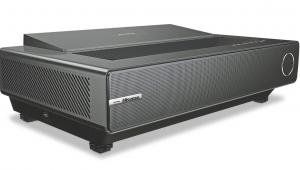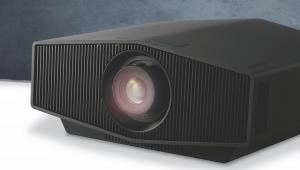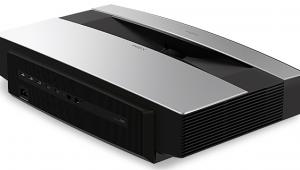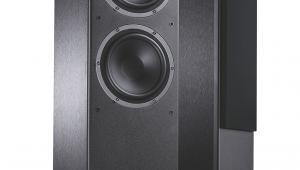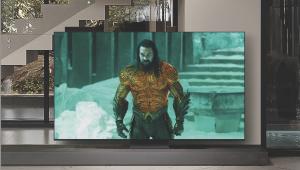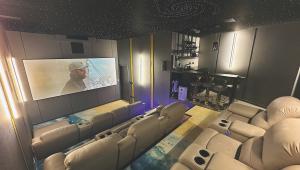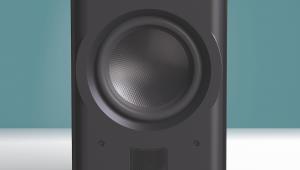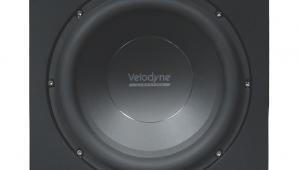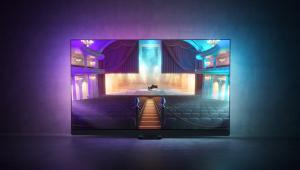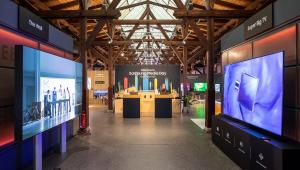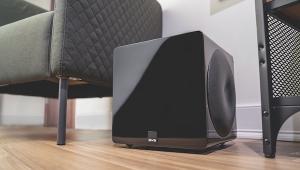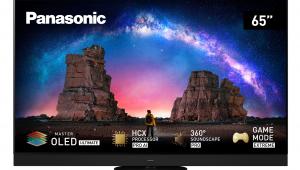Sony VPL-HW45ES review
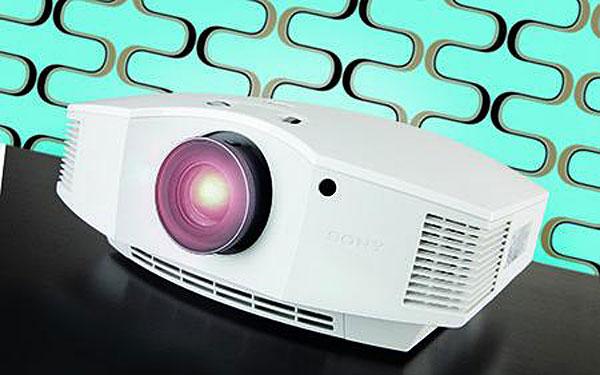
 Sony's VPL-HW45ES projector arrives on the back of plenty of anticipation. Its predecessor, the VPL-HW40ES, was a leading light in the sub-£2,000 price bracket, and since that model was launched Sony’s projector division has gone from strength to strength with its native 4K/high dynamic range-capable VW320ES and VW520ES home cinema beasts.
Sony's VPL-HW45ES projector arrives on the back of plenty of anticipation. Its predecessor, the VPL-HW40ES, was a leading light in the sub-£2,000 price bracket, and since that model was launched Sony’s projector division has gone from strength to strength with its native 4K/high dynamic range-capable VW320ES and VW520ES home cinema beasts.
The HW45ES is not, though, a native 4K projector. It’s Full HD only. Nor does it support HDR. This is perhaps to be expected of a home theatre PJ retailing for £1,850, although Epson's EH-TW7300, which is due to arrive in September, will bring HDR and uprezzed 4K playback to the market at £2,100.
Apart from these less than state-of-the-art specs, in most other ways the HW45ES is a serious proposition, and Sony claims that its innards have undergone a radical reworking, resulting in improved colour and noise handling.
The projector has a brightness rating of 1,800 Lumens (a slight increase from the 1,700 Lumens of the HW40ES), and introduces an improved alignment layer for its SXRD chipset that hopes to reduce light ‘scatter’ to boost black levels and contrast. Also present to try and optimise the performance with any source, even standard-definition ones, are Sony’s Reality Creation and Super Resolution processing systems, and Motionflow technology to be called on to tackle potential judder and blur issues. There's also a new low-latency mode – Input Lag Reduction – for gaming which, when tested, resulted in a highly impressive response time of barely 15ms. And then there's a long-life lamp reckoned to soldier on for a massive 6,000 hours if you stick with the projector’s most economical lamp setting.
What hasn't changed, though, is the design. The attractive white (black is also available) exterior looks the same as the one wrapped around the HW40ES. Connections are side-mounted and a pretty minimal; there are two HDMI inputs, a USB for firmware updates, and IR and RS232 ports. There's no 12V trigger or analogue AV inputs. That latter isn't a big deal, but the former could be.

Setup is relatively straightforward. Zoom (a handy 1.6x) and focus have to be operated manually rather than from the Sony PJ handset. There are (wide-ranging) vertical/horizontal image shift wheels to get your image positioned correctly, while the throw ratio of 1.36-2.16:1 should suit most typical-size cinema rooms/screens.
Once you've got the basic image setup finalised, I’d recommend turning the Contrast Enhancer system (contained in the Cinema Black Pro menu section) down to Low or off entirely from the default setting, which is Middle. Otherwise, I discovered, dark areas of the image can look empty and dominant.
It felt to me, too, that the Sony operates more comfortably for dark room viewing with the lamp set to Low rather than the High default used even with the projector’s two popular Cinema Film picture presets. The higher lamp mode causes greyness over black areas, a slight reduction in light uniformity, an increase in source noise, and a slightly jaundiced look to some colours.
You should also turn off all noise reduction systems when watching any half-decent HD source, and while Sony’s True Cinema Motionflow processing option is effective and tries to retain the slightly ‘pulsing’ look of 24p film, I ended up turning it off completely, as for me the HW45ES’s native motion handling is good enough not to need any help.
Where Sony’s Reality Creation system is concerned I’d just about say leave it activated. It adds quite a lot of sharpness to the image without being ghastly. AV purists will, of course, leave it off on principle.
Class actHousekeeping issues dealt with, the HW45ES’s pictures once again put Sony right at the forefront of the sub-£2,000 projector class.
The performance trait that stands out most is the exceptional detail and clarity the image contains. During a run through of Mel Gibson’s beautiful Apocalypto I swear I could see little details I’d not witnessed before on an HD projector, in everything from close-ups of the actors' faces to the dense flora and fauna of the forest and the wide vistas of the Mayan kingdom.
As well as making Apocalypto’s BD visuals look dense, immediate and immersive, the level of detail is such that it seems to open up the sense of space in the picture. I know I'm merely looking at a flat image on a screen, but it doesn't quite feel like it.
Sony’s Reality Creation processing, if you use it, plays a role in this sense of sharpness and spatial volume. But it’s only one part of the story. Contributing in no small measure to the picture’s naturalism and depth is some nuanced handling of light. The amount of shadow detail the PJ is able to resolve in the darkest corners of Apocalypto without compromising black level depth really is exemplary. This helps create a much more consistent image tone, as Apocalypto shifts between dark and bright sequences, than you usually get with affordable projectors.
It’s not just between scenes that the Sony's excellent light management shines. Apocalypto’s early jungle sequences feature an extremely difficult mix of dark and light tones, yet the HW45ES has enough native contrast to render the subtle light shifts with authority, never letting any dark or light shades dominate. It’s hard to imagine any DLP or LCD solution being able to offer the same sort of single-frame light sophistication – and it’s in this respect, too, that the HW45ES delivers its biggest step up from the HW40ES.
A final factor contributing to the projector's spectacular clarity is its colour handling. There are few films with a denser mix of tones and explosive colour dynamics than Apocalypto. Every jungle leaf seems to have a natural colour life of its own, while the preponderance of human flesh on show throughout the film benefits from a deft appreciation of the sort of slightly warm tones that make images look cinematic. Having strong black levels to ‘bounce off’ doesn’t do the projector’s colours any harm either.
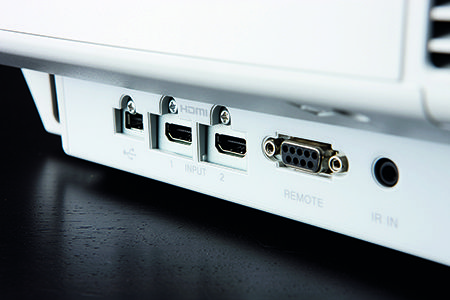
There's an appreciable intensity to the HW45ES's pictures that it's difficult not to love, be it in the darkest night-time scenes or ultra-vivid sequences like Apocalypto's dramatic escape from ‘trial by spear’. However, for all their brilliance, images aren’t nearly as impressive in the black level response and contrast departments as those you can get from PJs from Sony's big rival, JVC. As a counterpoint to that, JVC's entry-level DLA-X5000 retails for more than twice as much. It'll be the aforementioned Epson rival – when it arrives – that the Sony more urgently has to see off.
Entering another dimensionThe HW45ES has an integrated 3D sync transmitter. No 3D glasses are provided as standard with the projector alas – although for once we were at least provided with a pair for this review.
The projector is hit and miss with 3D. In the ‘hit’ column, its pictures look crisp and suffer with little crosstalk ghosting noise. The strong contrast performance helps paint a natural sense of space, too. However, Sony’s current 3D glasses design lets way too much light in around the side of the lenses, and the amount of brightness you have to sacrifice when switching from 2D to 3D is disappointingly extreme.
Let’s not let a little 3D dimness spoil the party, though. Add a whisper-quiet running noise when running it in Low lamp mode to the HW45ES’s prodigious 2D picture talents and you’ve got a projector that currently can't be bettered without spending substantially more.
Specification
3D: Yes. Active 4K: No. 1,920 x 1,080 HDR: No Connections: 2 x HDMI inputs; IR input; RS232; USB port for firmware updates Brightness (claimed): 1,800 Lumens Contrast (claimed): N/A Zoom: 1.6x optical Dimensions: 407.4(w) x 179.2(h) x 463.9(d)mm Weight: 10kg
Features: 6,000-hour claimed lamp life (on Low lamp mode); black or white finish options; 22dB claimed minimum fan noise; Reality Creation upscaling processing; Motionflow; vertical (+/- 71%) and horizontal (+/- 25%) image shift; 40in-300in image size; 215W lamp; 1.36:1-2.16:1 throw ratio
 |
Home Cinema Choice #351 is on sale now, featuring: Samsung S95D flagship OLED TV; Ascendo loudspeakers; Pioneer VSA-LX805 AV receiver; UST projector roundup; 2024’s summer movies; Conan 4K; and more
|

